
MSP Corporation
M agnesium S aves our planet
XPRIZE Team
"Zero Waste Disposal Desalination"
Desalination device without high salinity discharge
The population is expected to reach 9.73 billion by 2050, which will require 2.2 trillion tons of new water per year. Current equipment such as reverse osmosis desalination systems are forced to release seawater with high salinity, causing serious environmental damage in the surrounding waters.
We patented a device that produces only pure water and recovers substances contained in seawater as solids, and succeeded in manufacturing a testing machine. The device operates at low temperatures below the boiling point, works with solar water heaters and various waste heats, and is an environmentally friendly device.
Four Major Technologies of Yabe Desalination
1. Evaporation at Low Temperature(60-80degree) and Atmospheric Pressure
2. No Membrane used
3. Ultra-multistage in one stage container
4. Reuse latent heat
Evaporation at Low Temperature and Atmospheric Pressure

Since the multi-stage flush method uses boiling, it is necessary to change the atmospheric pressure in order to achieve different boiling temperatures.In contract, evaporation can occur at atmospheric pressure and at any low temperature like steam from coffee cup. But the evaporation rate in this case is very slow. In order to accelerate the evaporation rate, we need to increase the surface area of water-vapor interface making fine droplets.In 1974, Yabe proposed to use the rotating drum to making fine droplets and the droplet size is inversely proportional to rotating speed.
By properly designed the form of propeller, the size of mists becomes extremely fine as shown in the video below.
Ultra-multistage in one stage container

Reuse latent heat
The latent heat of evaporation is enormous but the latent heat of condensation is the same amount. If we can use the latter to heat the evaporation, required energy for desalination becomes very small. However, heat cannot be transported from low temperature to high temperature. To overcome this difficulty, multi-stage method has been invented.
Yabe found that the circulating pure water can be an alternative to this technique. The green arrows represent the circulating water. On the top part of the figure, circulating water gains energy from heat exchanger in condensation, On the bottom of the figure, circulation water gives this energy to seawater for evaporation.

How to remove ingredients like salt
If seawater continues to circulate inside the device, salt precipitates when salinity exceeds 20%. Only thing we must do is to simply scoop the salt mechanically. Fortunately salt appears only in the red circled part of the device,
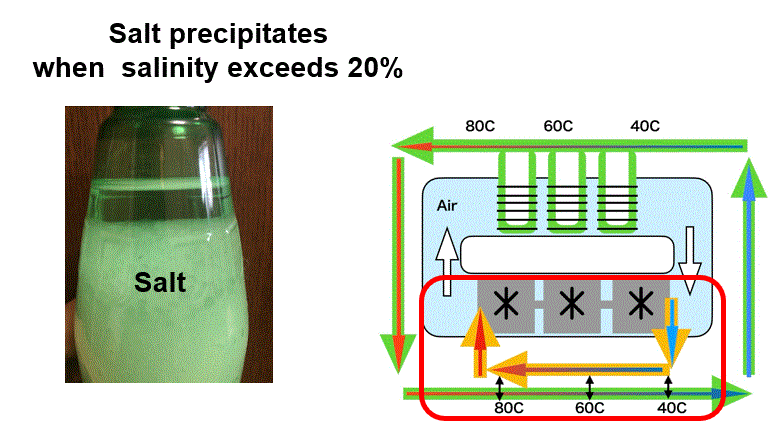
Less Energy Consumption than MVR
(Mechanical Vapor Recompression)
Since a part of seawater is evaporated to pure water during this cycle, the same amount of new cold seawater should be introduced to the system, If the temperature of seawater is 20 degree centigrade, it must be raised to 40 degree but required energy is 4.2x20 J/g while latent heat of evaporation is 2400 J/g. Then required energy of this system will be 1/30 of latent heat. Then this system works economically with solar heating etc.
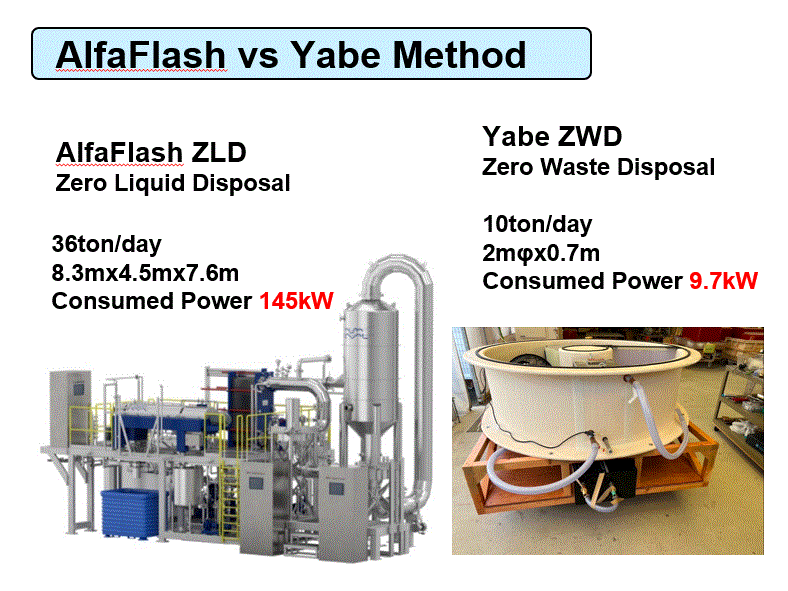

Prototype device - Salt removed completely

How to construct large system
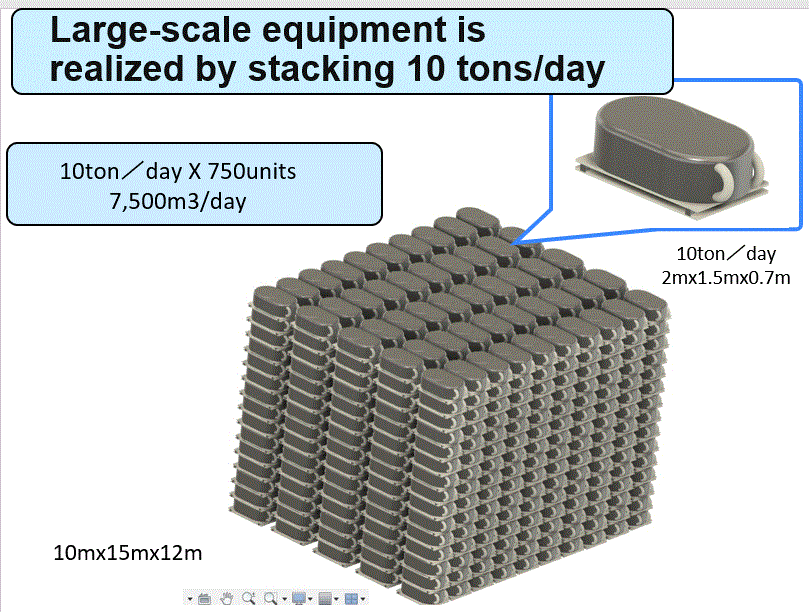
Experiment in Taizou, China
December 10, 2019
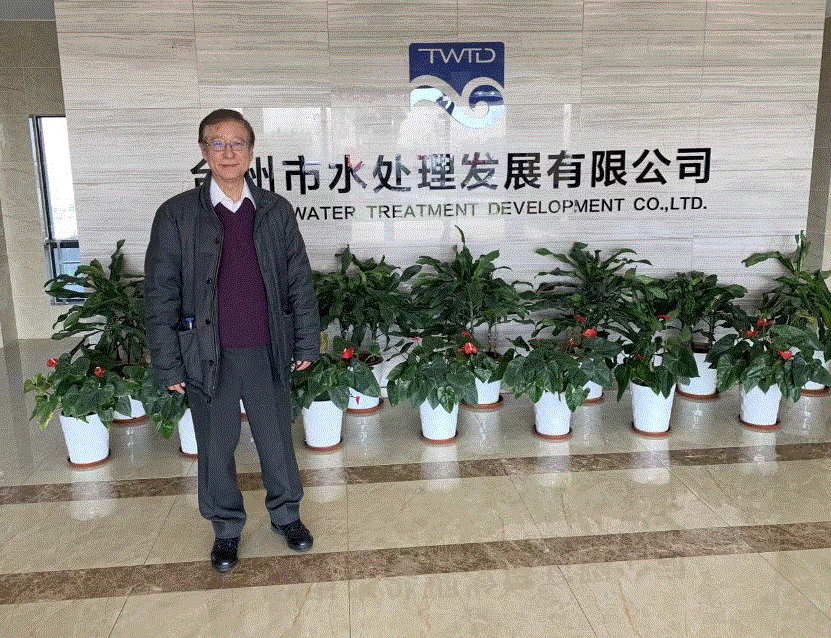
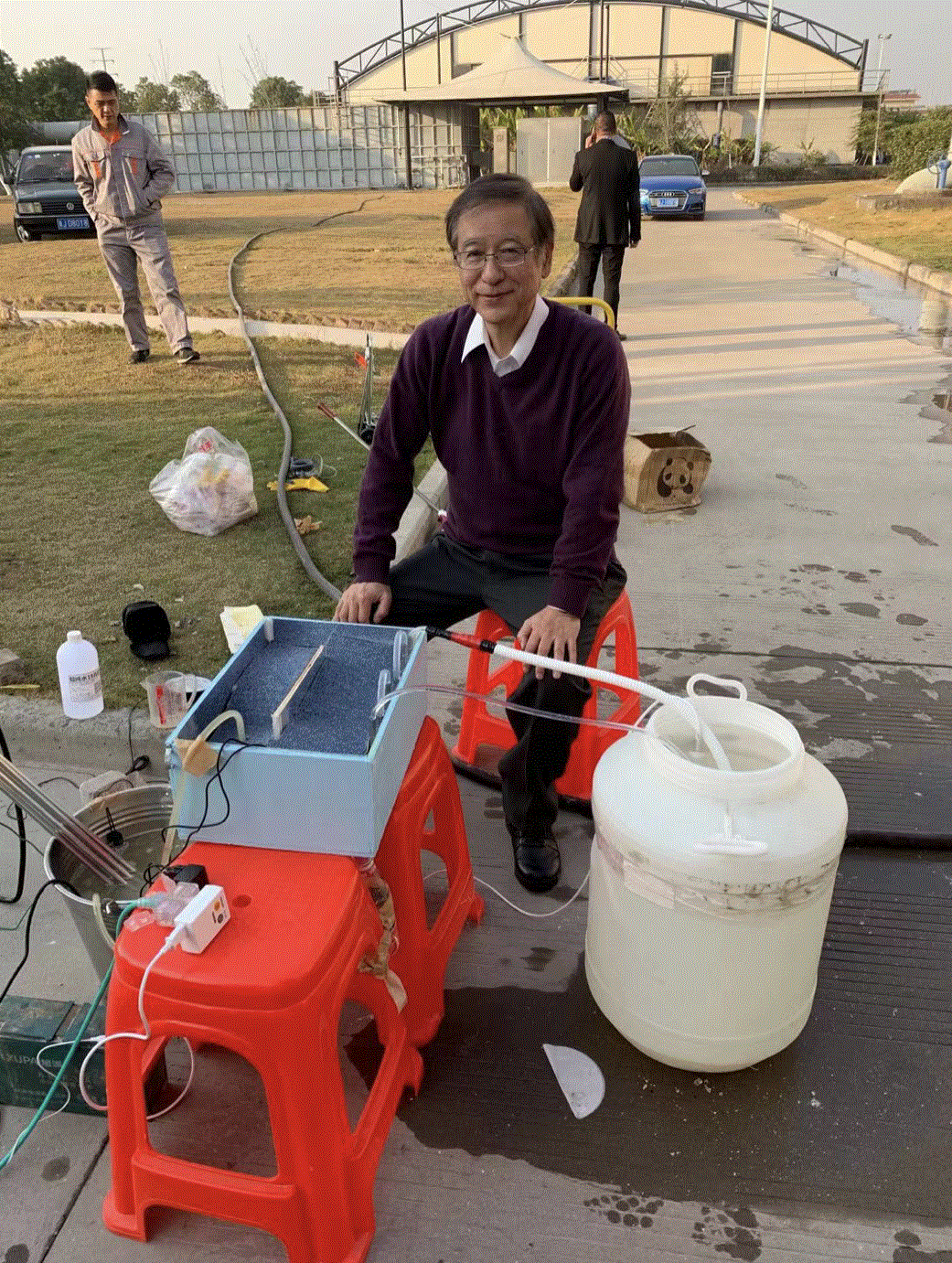
Portable device capable of 1 Litter / hour carried from Japan .
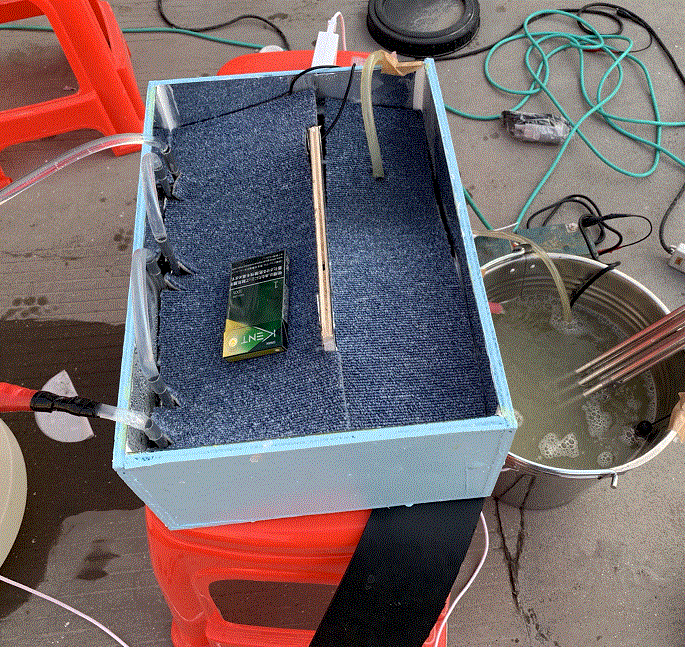
Polluted (Left) to Pure Water (Right)

Improve Existing Facility
Ordinary desalination plant like RO (Reverse Osmosis) exhausts high-salinity and polluted sea water back to ocean.
In order to solve this problem, we propose to use our desalination device. This plan is named "Remora Strategy". In RO, 3 seawater input is converted to 1 pure In addition, production of pure water increased by 3 times. Out device should convert this exhaust to pure water, solving pollution problem. In addition, production of pure water increased by 3 times.



